Stadiums to be Demolished in the Future
These stadiums will be demolished — sooner or later. Sadly, this fate awaits many iconic venues, and within just a few years, several legends will disappear from the sporting map of the world. For the purpose of this list, we have created visualizations of the demolitions to help illustrate the process.
The stadiums could be demolished within the next few years. Which venues will disappear forever from history, and where will new arenas rise in their place?
-
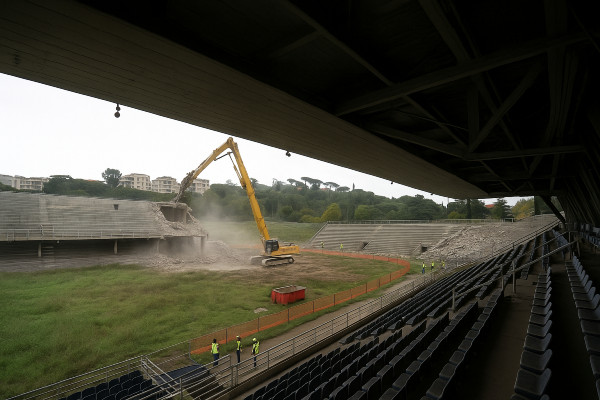 Stadio Flaminio Built in 1958, Rome
Stadio Flaminio Built in 1958, RomeWhen it first opened, Stadio Flaminio could hold over 40,000 spectators. It hosted Italy’s national rugby team between 2000 and 2011, becoming a regular venue for the Six Nations Championship. During the 1989/90 season, both AS Roma and Lazio played here while Stadio Olimpico was being renovated for the 1990 World Cup. Since then, Flaminio has been abandoned and is slowly crumbling. The latest plan sees Lazio potentially leaving Olimpico and moving into a rebuilt, modern Flaminio.
-
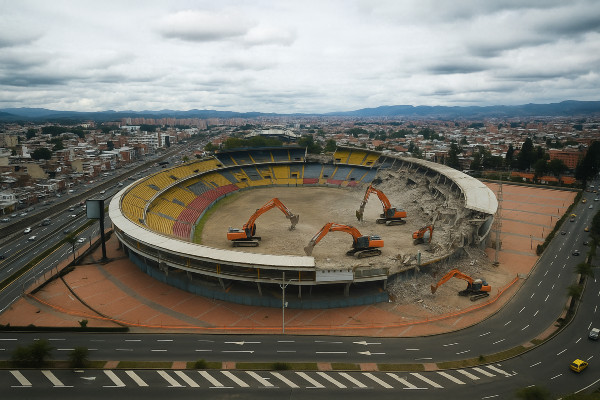 Estadio Nemesio Camacho Built in 1938, Bogota
Estadio Nemesio Camacho Built in 1938, BogotaEl Campín, Bogotá’s iconic stadium, was inaugurated nearly 90 years ago. Over the decades, it has hosted major events like the Copa CONMEBOL, Copa America, and Copa Libertadores finals. While initial plans called for gradual renovation of the existing structure, by 2025 there is serious talk of full demolition. A brand-new stadium would then rise to the northeast of the current site, slightly larger and built to modern standards.
-
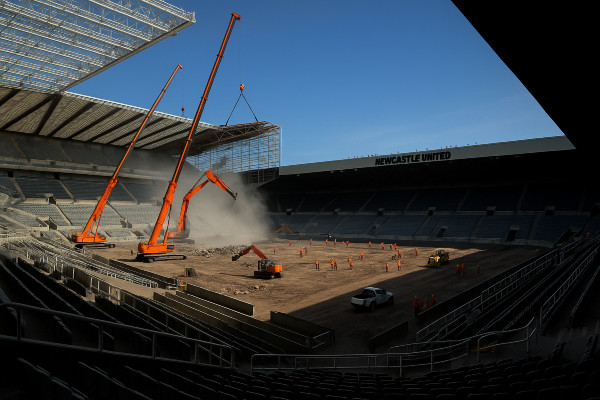 St. James’ Park Built in 1880, Newcastle
St. James’ Park Built in 1880, NewcastleSt James’ Park, home of Newcastle United since 1892, is one of the most iconic stadiums in England. The club is currently considering two options: expanding the existing ground or building a brand-new stadium for up to 70,000 spectators in nearby Leazes Park. Expansion faces challenges due to limited space and the presence of historic buildings, while a new stadium could significantly boost revenue. St James' Park would then be either fully demolished or partly preserved as a memorial site.
-
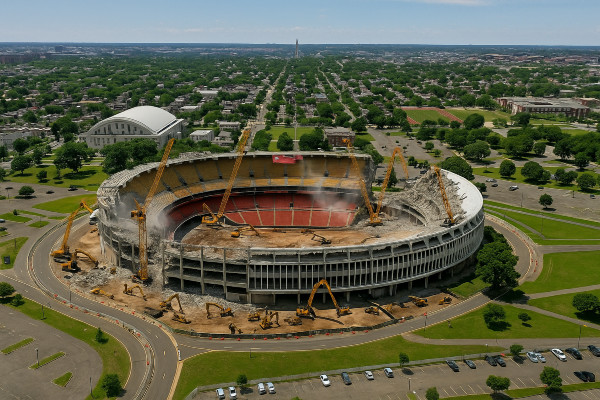 Robert F. Kennedy Memorial Stadium Built in 1961, Washington
Robert F. Kennedy Memorial Stadium Built in 1961, WashingtonRobert F. Kennedy Memorial Stadium, known as RFK Stadium, was a multi-purpose sports venue in Washington, D.C., opened in 1961. For decades, it hosted NFL, MLB, and MLS games, as well as numerous concerts and events. After its closure, discussions about its future continued, and demolition works were underway in 2025. A new stadium for the Washington Commanders, with a planned capacity of 65,000, is expected to open in 2030. The project also includes residential, recreational, and commercial developments in the surrounding district.
-
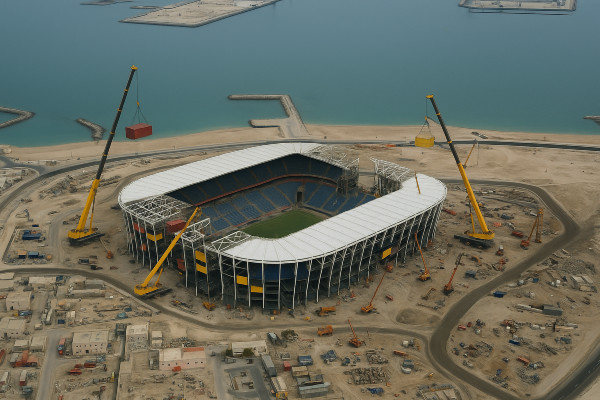 Stadium 974 Built in 2021, Doha
Stadium 974 Built in 2021, DohaThe portable stadium was a novelty in Qatar and attracted a lot of attention, especially considering that the other venues were far more spectacular. Stadium 974, a modular venue built from 974 shipping containers for the 2022 World Cup, was intended to be dismantled after the tournament. However, the stadium still stands in Doha, occasionally hosting various events. There were plans to reuse it for future World Cups, including a relocation to Uruguay for the 2030 tournament. These plans were eventually abandoned. Despite its temporary design, the stadium’s future remains uncertain, with no confirmed timeline for relocation or demolition.
-
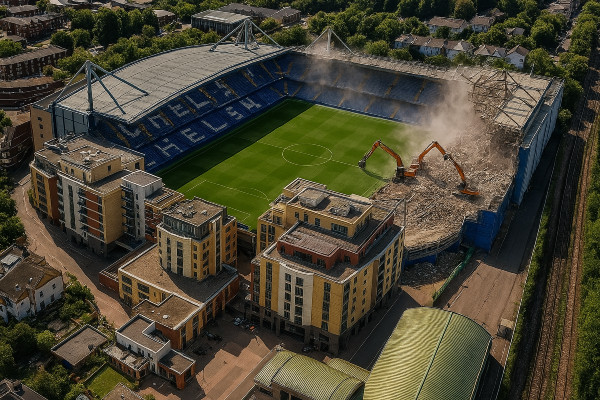 Stamford Bridge Built in 1877, London
Stamford Bridge Built in 1877, LondonStamford Bridge, Chelsea FC's home since 1905, is among the Premier League's oldest stadiums. With a capacity of just over 40,000, it lags behind rivals in size and revenue potential. Due to its central London location, expansion is challenging, prompting the club to consider demolishing and rebuilding on the same site or elsewhere. The redevelopment could take 5–7 years, during which Chelsea might play at a temporary venue. The new stadium aims to seat 55,000–60,000 fans, enhancing matchday income and modernizing facilities.
-
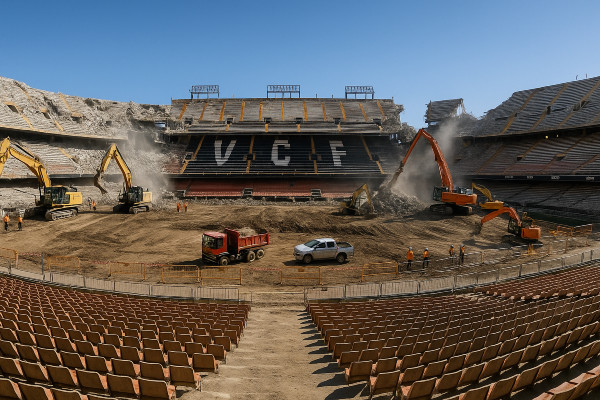 Estadio de Mestalla Built in 1923, Valencia
Estadio de Mestalla Built in 1923, ValenciaEstadio de Mestalla, home of Valencia CF since 1923, is one of the oldest stadiums in Spain. In January 2025, after a 16-year hiatus, construction of the Nou Mestalla resumed, with the opening of the new 70,044-seat stadium planned for summer 2027. Once the team moves to the new venue in the Benicalap district, the historic Mestalla may be demolished. It would be a major loss for Spanish sports infrastructure, as Mestalla is one of the most distinctive stadiums, known for its striking colors and steep stands.
-
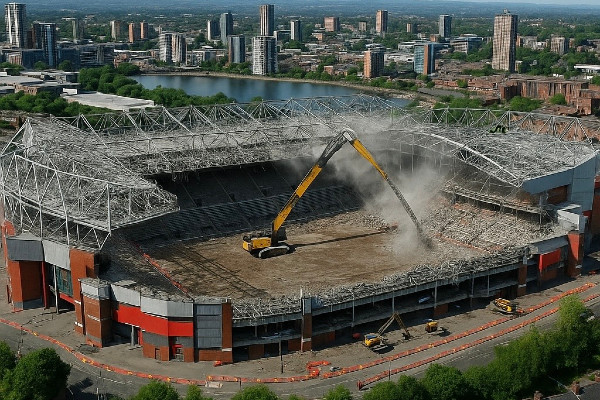 Old Trafford Built in 1910, Manchester
Old Trafford Built in 1910, ManchesterOld Trafford, home of Manchester United since 1910, has been an icon of English football for decades. However, in recent years it has suffered from serious technical problems, including a leaking roof that has repeatedly flooded the stands. Plans for expansion faced challenges due to limited space and high costs. In March 2025, the club announced the decision to build a new 100,000-seat stadium, meaning Old Trafford will be completely demolished. The demolition may take around a year, with the new venue expected to open for the 2030/31 season. The project will be drastically different from Old Trafford, which was built in the traditional English style, while the new stadium is expected to resemble something from Dubai — at least according to Jamie Carragher.
-
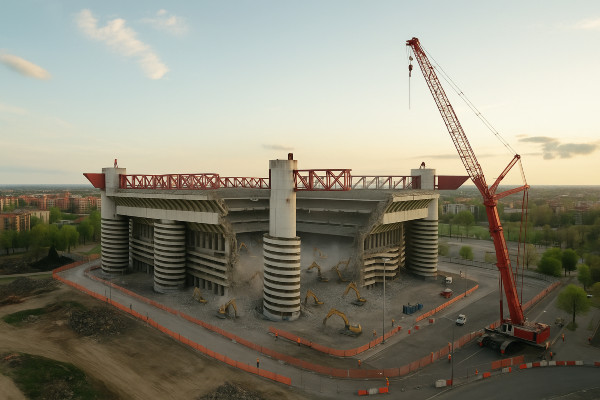 San Siro Built in 1926, Milan
San Siro Built in 1926, MilanSan Siro, home to Inter and Milan since 1926, faces an uncertain future. Both clubs are planning to build a new stadium near the current site, but they are also considering separate venues in other locations. The projects face obstacles, and San Siro’s fate is complicated by opposition from heritage authorities and the upcoming opening ceremony of the 2026 Winter Olympics, which is set to take place at the stadium. After the Olympics, San Siro could be either fully or partially demolished, but with no clear decisions made, its future remains unclear. For now, the stadium still has a future — there has been talk of hosting a future Champions League final, and Italy will organize EURO 2032. Will San Siro survive until then?

 StadiumDB
StadiumDB